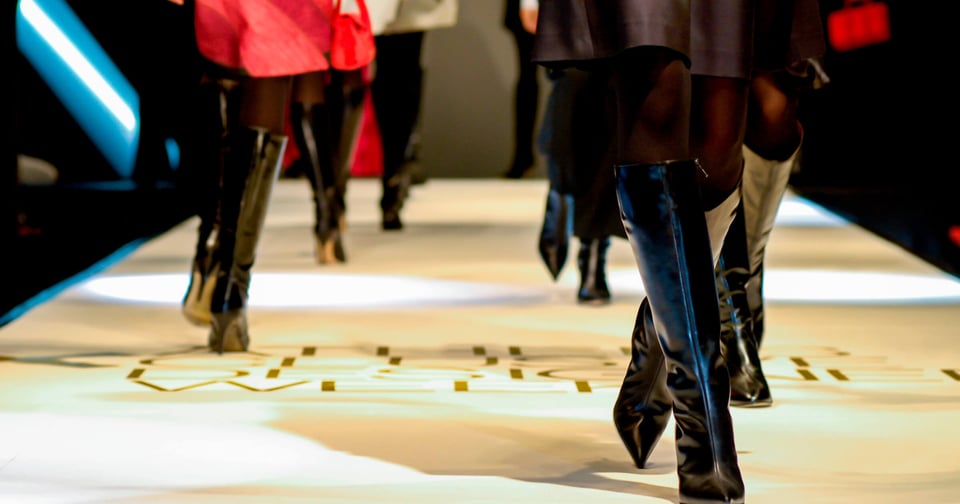Eco Fashion Trends 2025 as time progresses, the awareness of sustainability grows among both consumers and fashion designers. In 2025, the fashion world will experience a major shift, where eco-friendly fashion trends or eco fashion trends 2025 will become more dominant and unavoidable. Today’s consumers are looking for clothing that is not only aesthetically pleasing but also supports the sustainability of our planet. With increasing attention on environmental issues, the fashion industry is adapting with new ways of designing, producing, and consuming that are more environmentally responsible.

Advances in Sustainable Fabrics
One of the major trends in eco fashion trends 2025 is the growing use of sustainable fabrics. Many fashion brands are moving away from synthetic materials that harm the environment, such as polyester and nylon, and are instead turning to natural, more eco-friendly options. Fabrics like organic cotton, bamboo, and hemp are gaining popularity due to their lower water requirements and reduced pesticide use compared to conventional fabrics.
Furthermore, recycled materials are becoming more commonly used, such as fabrics made from recycled plastic bottles or other discarded materials. Innovative materials like mushroom leather (mycelium) and algae-based fabrics are also making their way into the fashion scene, offering more sustainable alternatives to animal-based materials like leather.
In 2025, we can expect to see more brands using natural and recycled fabrics, offering consumers more options for reducing their carbon footprint through their fashion choices.
Circular Fashion: Changing How We Use Clothing
Circular fashion is another major focus of eco fashion trends 2025. Rather than following the rapid cycles of seasonal trends, circular fashion prioritizes durability and quality in every design.
This helps to reduce textile waste ending up in landfills and minimizes the mass production of new, unnecessary garments.
By 2025, we will see more brands adopting these principles, allowing consumers to opt for longer-lasting clothing that is easier to recycle or upcycle rather than discard.
Technology in Sustainable Fashion Production
One of the exciting aspects of eco fashion trends 2025 is the implementation of cutting-edge technologies in the clothing production process. Technologies that reduce waste, increase efficiency, and make production more environmentally friendly are gaining traction. For instance, 3D knitting machines are allowing for precise garment creation, which reduces fabric waste.
Using software to design clothing allows designers to create digital prototypes without having to produce physical samples, which saves resources. This technology also enables manufacturers to produce clothing in smaller, more focused quantities, reducing the risk of overproduction, which is a major issue in the fashion industry.
Other innovations include the use of artificial intelligence (AI) to predict trends and consumer preferences. By analyzing big data, AI helps brands make more informed decisions in production, minimizing waste and increasing sustainability across the supply chain.
Eco-Friendly Dyeing and Printing Methods
Dyeing and printing clothing are some of the most water-intensive processes in garment production, often using harmful chemicals. As part of eco fashion trends 2025, there will be a significant shift towards more sustainable dyeing and printing techniques. Environmentally friendly dyeing technologies that use little or no water are becoming more common, which is crucial because the textile industry is one of the world’s largest water consumers.
Furthermore, dyeing with natural, plant-based colors is gaining popularity. Dyes derived from fruits, flowers, and herbal plants are not only more eco-friendly but also free from the harmful chemicals that pollute the environment.
Digital printing technology will also see widespread adoption, as it uses less water and energy than traditional methods. Digital printers allow for patterns to be directly applied to fabric, producing designs more efficiently and sustainably.
Minimalist Clothing and Long-Lasting Styles
To minimize overconsumption, many consumers are shifting toward minimalist clothing that is more simple and functional. Eco fashion trends 2025 will emphasize a lifestyle that embraces durable, versatile clothing that can be worn for a long time. Instead of chasing fast fashion trends that change every season, many people are opting for high-quality pieces that can last for years.
Clothing that is multifunctional and practical will be a top choice, reducing the need to buy many different pieces. Clean designs, neutral colors, and easy-to-mix-and-match garments will dominate in 2025. This trend not only helps consumers make more conscious purchasing decisions but also supports sustainability by reducing waste and the use of materials.
Ethical and Transparent Fashion Brands
One of the biggest changes in eco fashion trends 2025 will be the rise of fashion brands that are more transparent about their production processes.
Brands that are transparent and ethical will become more popular, with many offering clear information about the origins of their materials, production processes, and how they ensure fair wages for workers. This gives consumers the ability to make more informed choices based on sustainability and social justice principles.
This will empower consumers to make choices that align with their values.
The Rise of Vegan and Cruelty-Free Fashion
As part of the shift toward sustainability, vegan and cruelty-free fashion will become even more popular among consumers in eco fashion trends 2025.
Vegan leather made from materials such as mushrooms, cactus, and apples is becoming more prevalent, offering products that look like real leather but are much more eco-friendly.
The growth of vegan and cruelty-free fashion will give consumers more options that align with their sustainability and ethical values in fashion.
By 2025, eco fashion trends 2025 will become a force to be reckoned with in the fashion world. Consumers, more aware than ever of the environmental impact of the fashion industry, are driving massive changes, both in how clothing is produced and how it is consumed. By focusing on more eco-friendly materials, implementing cutting-edge technologies, and embracing sustainability and ethics, the fashion industry is set to transform into a greener, more responsible sector. Clothing will no longer be just about looking good, but about making choices that are better for the planet.




